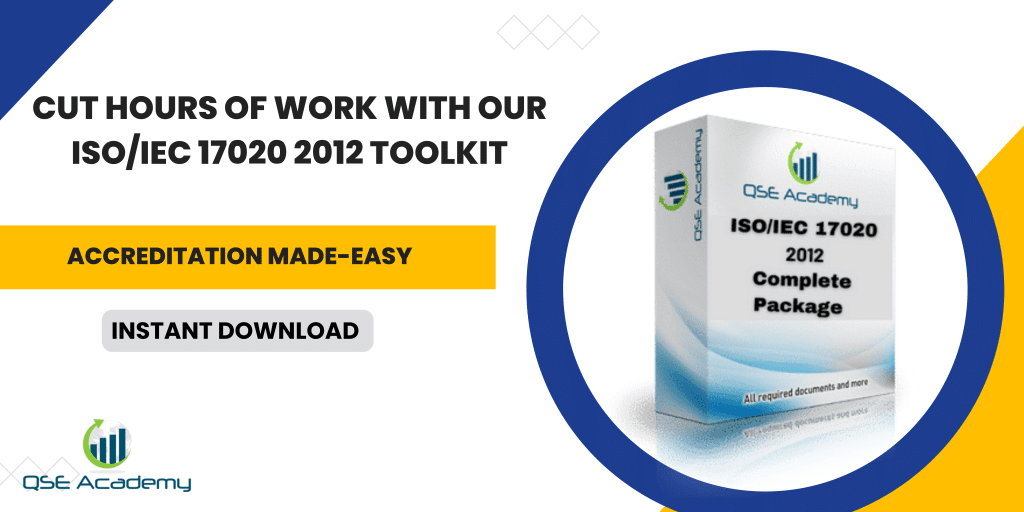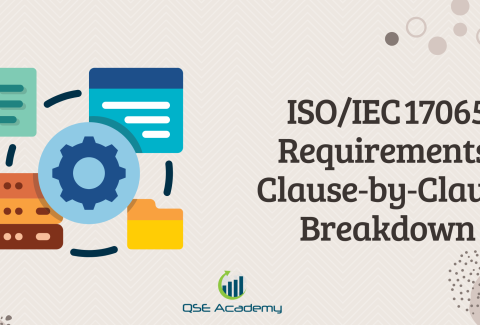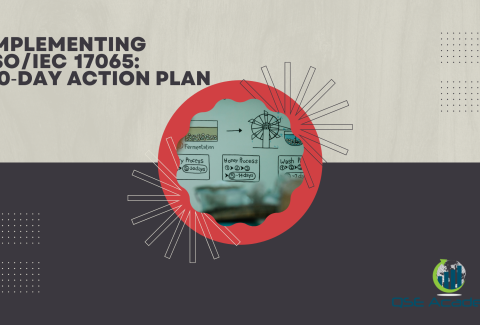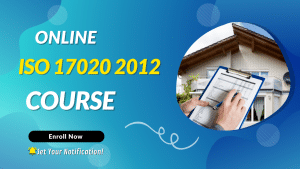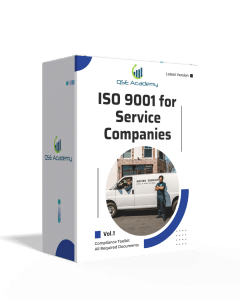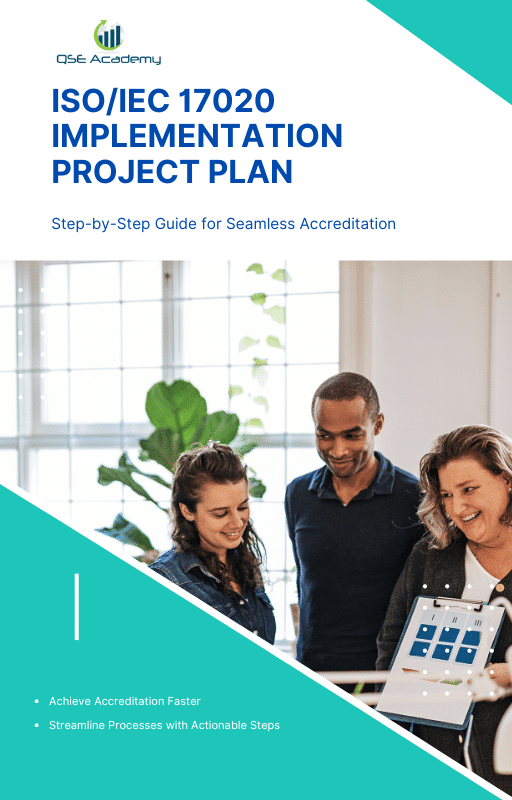ISO/IEC 17020 Clause 7: Process Requirements Step‑by‑Step
Last Updated on October 22, 2025 by Hafsa J.
Why Process Control Is the Heart of ISO/IEC 17020
If Clause 4 and 5 are about structure and impartiality, Clause 7 is where the real work happens. It’s the engine room of your inspection body—the process that turns client requests into reliable, repeatable inspection results.
Here’s what I’ve noticed: inspection bodies often have great people and equipment, but their processes are inconsistent. One inspector does things one way, another uses a slightly different checklist, and reports don’t always look the same. That might not seem like a big deal—until an auditor asks, “How do you ensure consistency?”
Clause 7 fixes that. It gives you a framework to control every step of the inspection process—receiving requests, planning, executing, reviewing, reporting, and even handling complaints.
By the end of this article, you’ll see how to turn your inspection activities into a clear, traceable system that any auditor can follow from start to finish. Because when your process is controlled, your credibility skyrockets.
What Clause 7 Really Covers – The Inspection Life Cycle Explained
Clause 7 is where ISO/IEC 17020 gets hands-on. It doesn’t just ask for a process—it defines it. Think of it as your inspection body’s playbook, guiding every step from the moment a client calls to the day you issue the report.
In short, Clause 7 covers the entire inspection life cycle:
-
Receiving and reviewing requests.
-
Planning the inspection.
-
Conducting the inspection itself.
-
Evaluating and reviewing results.
-
Issuing the report.
-
Handling complaints, appeals, and records.
Each step needs to be consistent, documented, and repeatable—no matter who performs it. That’s how you build confidence that two inspectors will always reach the same conclusion under the same conditions.
Here’s what I tell clients: if Clause 4 (Impartiality) is the heart of ISO/IEC 17020, Clause 7 is the circulatory system—it moves everything through your organization in a controlled, transparent way.
Pro Tip: Map your inspection workflow visually. A simple flowchart linking each step, document, and responsible person can save hours during an audit and help new inspectors understand the process faster.
Common mistake? Relying on informal coordination—verbal instructions, emails, or “we’ve always done it that way.” Without documented control, you’re leaving your consistency to chance.
Now that you know what Clause 7 covers, let’s start with the first critical step: handling inspection requests and reviewing contracts properly.
Step 1 – Handling Inspection Requests and Contract Review
Every inspection begins with a request—and how you handle that request sets the tone for everything that follows. Clause 7.1 and 7.2 make it clear: before accepting any work, your inspection body must review whether it’s competent, impartial, and resourced to do it.
Here’s the catch: most nonconformities at this stage happen because teams assume they can take on a job without formally reviewing it. I’ve seen inspection bodies jump straight into scheduling, only to realize later they lacked the right qualifications or equipment for that type of inspection.
Here’s how to stay compliant and confident:
-
Use a Request Review Form. Record details like client name, scope, applicable standard, inspection location, and any impartiality risks.
-
Check capability and resources. Can your team handle this inspection with current staff and equipment?
-
Review conflicts of interest. If a client is also a supplier or partner, document the impartiality assessment.
-
Confirm acceptance in writing. Both parties should clearly agree on scope, deliverables, and terms before the work starts.
Pro Tip: Don’t skip reviews for “repeat clients.” Even if the work looks identical, conditions, people, or standards may have changed. Auditors expect you to treat every job like a new one.
Common mistake? Letting sales or admin staff accept inspection work without formal technical approval. Every contract must pass through a competent reviewer before it’s accepted.
Once the request is reviewed and accepted, the next logical step is planning—how to organize and execute the inspection effectively and consistently.
Step 2 – Planning the Inspection
Once an inspection request is approved, the next step is planning. This is where you turn the “what” into the “how.” Clause 7.3 and 7.4 require inspection bodies to plan inspections systematically—making sure methods, timing, and personnel are all fit for the job.
Here’s what that looks like in practice:
-
Define the inspection scope and method. What’s being inspected? Which standard or procedure applies?
-
Assign qualified inspectors. Only personnel with the right competence (and no conflicts of interest) should be chosen.
-
Schedule the inspection. Set timelines that allow proper preparation, travel, and review time—never rush inspections.
-
Prepare tools and documentation. Ensure calibrated equipment, approved checklists, and forms are ready before the work starts.
In my experience, solid planning is what separates smooth operations from chaotic ones. When everything’s defined upfront, you don’t waste time firefighting on-site.
Pro Tip: Keep a Job Planning Record or Inspection Plan for each assignment. It should show who’s assigned, what’s being inspected, when it’ll happen, and what methods will be used. It’s simple proof of control that auditors always appreciate.
Common mistake? Treating planning as informal. Verbal plans or email threads don’t count—Clause 7 expects documented evidence that inspections are planned, resourced, and controlled.
With a clear plan in place, it’s time to move to the core of your work—performing the inspection itself according to approved methods.
Step 3 – Performing the Inspection
This is where all your preparation pays off. Clause 7.5 focuses on one thing—doing the inspection exactly as planned. It sounds simple, but this is where many inspection bodies slip up. Small deviations, undocumented shortcuts, or “quick fixes” can turn into nonconformities fast.
Here’s how to stay consistent and compliant:
-
Follow approved procedures and methods. Every inspection must be based on documented instructions or standards—no improvising in the field.
-
Use only calibrated and verified equipment. Tools must be within their calibration dates and function checks should be recorded.
-
Record observations objectively. Inspectors must document what they see, not what they expect. Facts, not assumptions.
-
Handle client interactions professionally. Inspectors can answer questions, but should never make promises or give consulting advice during inspections.
In my experience, auditors love seeing consistency. If two inspectors can perform the same inspection and get the same result, you’ve nailed Clause 7.
Pro Tip: Standardize your inspection checklists. Whether it’s photos, signatures, or result codes, keep formats consistent across all inspectors. It makes reviews faster and audits easier.
Common mistake? Adjusting methods “on the fly” to meet client requests. If changes are absolutely necessary, they must be approved and documented before continuing.
Now that the inspection is complete, the focus shifts to evaluating and reviewing results—making sure findings are interpreted correctly before they reach the client.
Step 4 – Evaluating and Reviewing Results
After the inspection work is done, Clause 7.6 steps in—it’s time to evaluate what you found and make sure the results are valid, consistent, and fully reviewed before they go anywhere near the client.
Here’s the key principle: the inspection isn’t finished until someone qualified has verified the outcome. That means no reports should be issued until the results are reviewed by an authorized person who wasn’t directly involved in performing the inspection.
Here’s how to do it right:
-
Evaluate results against defined criteria. Compare findings to the inspection standard, client requirements, or acceptance limits.
-
Verify data completeness. Ensure all forms, checklists, photos, and calibration references are attached and legible.
-
Conduct a technical review. A reviewer—often a technical manager or senior inspector—confirms that results are consistent and conclusions are justified.
-
Approve for reporting. Only after review and approval can the inspection report be finalized and released.
Pro Tip: Build a two-tier review system. The inspector evaluates results, and an independent reviewer validates them. This adds a layer of impartiality that auditors love to see.
Common mistake? Rushing to issue reports without documented review. Even if everything looks fine, skipping that step can cost you an audit finding.
Once results are evaluated and verified, it’s time to translate them into something clear, traceable, and professional—the inspection report.
Step 5 – Preparing and Issuing Inspection Reports
Clause 7.8 is all about communicating results clearly and accurately. Your inspection report isn’t just a formality—it’s the official record that proves what you did, how you did it, and what you found. It’s also one of the first documents auditors and clients review, so it must be consistent and bulletproof.
Here’s what a compliant inspection report should include:
-
Unique identification. Every report must have a tracking number or ID that links to the corresponding inspection records.
-
Client and inspection details. Include client name, inspection date, location, and scope.
-
Inspection method and reference. Identify the standard, specification, or procedure followed.
-
Results and observations. Present findings clearly, with units, tolerances, and evidence (photos or data if relevant).
-
Reviewer and approver. Only authorized personnel should sign off, confirming review and release.
Pro Tip: Use standardized report templates. They save time, ensure consistency, and make it easy to check for completeness before issuing.
And one more thing: keep reports factual. Clause 7 is very clear—inspection bodies must not include opinions, recommendations, or consulting advice unless explicitly approved by the client and within the inspection scope.
Common mistake? Inspectors adding comments like “we recommend replacing the part” or “maintenance should be improved.” That crosses into consultancy, which jeopardizes impartiality.
Once your report is reviewed and issued, you’re not done yet—Clause 7 also expects you to handle complaints, appeals, and deviations professionally and objectively.
Step 6 – Handling Deviations, Complaints, and Appeals
No matter how solid your system is, issues will arise—clients question results, inspectors make mistakes, or unexpected situations cause deviations. Clause 7.9 and 7.10 exist for exactly that reason: to make sure your inspection body handles problems objectively, transparently, and consistently.
Here’s what that looks like in practice:
-
Record every complaint or appeal. Whether it comes by phone, email, or in person, log it immediately in a Complaint Register or tracking system.
-
Acknowledge receipt. Let the complainant know you’ve received their concern and will review it promptly.
-
Investigate independently. The investigation should be led by someone not directly involved in the inspection or decision being questioned.
-
Take corrective actions. Address the root cause, not just the symptom—update procedures, provide retraining, or adjust methods if needed.
-
Communicate outcomes. Document how the issue was resolved and inform the complainant respectfully and clearly.
Pro Tip: Keep your complaint and appeal procedures simple but visible. Train staff to escalate any issue—even small ones—through the proper channel instead of “handling it quietly.” Auditors appreciate openness far more than hidden fixes.
Common mistake? Treating complaints defensively. Remember, Clause 7 isn’t about avoiding complaints—it’s about proving control. Showing that you handle issues professionally actually boosts confidence with auditors and clients alike.
Once you’ve handled deviations and complaints effectively, the next priority is keeping your inspection records and data under strict control—because traceability is everything in ISO/IEC 17020.
Step 7 – Control of Records and Data
Clause 7.11 to 7.13 are all about protecting the lifeblood of your inspection body—your records. Every observation, calibration certificate, report, and client communication needs to be traceable, secure, and accessible when needed.
Here’s what I’ve seen during audits: most findings under this clause don’t come from missing records—they come from disorganized ones. Files are saved on personal laptops, emails go missing, or different teams keep their own “versions” of the same document. That’s exactly what Clause 7 aims to eliminate.
Here’s how to manage it right:
-
Keep all inspection records organized by job or project. Include request forms, plans, inspection notes, photos, reports, and correspondence.
-
Control access. Only authorized personnel should view or edit inspection data—especially when it’s electronic.
-
Use version control. Make sure the latest approved document is always the one being used; archive old versions properly.
-
Define retention periods. State how long you’ll keep records and where (digital, physical, or both).
-
Protect confidentiality. Client data must be treated with the same care as internal documents.
Pro Tip: Use a centralized record-control system or cloud-based QMS platform with role-based permissions. It reduces human error and gives auditors a clear trail of every record created, reviewed, and approved.
Common mistake? Letting inspection records live in email attachments or shared drives with no backup. One accidental deletion and your traceability is gone.
Once your records are safely under control, you’ve closed the full loop of Clause 7. Now, let’s address a few common questions I get from inspection bodies trying to simplify their process compliance.
FAQs – Process Requirements in ISO/IEC 17020
Q1. Do we need a separate procedure for every type of inspection we perform?
Not necessarily. You can use one well-structured master procedure that applies to all inspection types—as long as it clearly explains how differences are managed. For example, you might use separate checklists or templates for electrical versus mechanical inspections, but the main workflow stays the same.
Q2. Can inspectors modify inspection methods in the field?
Only if it’s absolutely necessary and properly documented. Clause 7 allows adjustments, but they must be justified, approved by management, and recorded in the report. If you change a method without documentation, auditors will flag it as a loss of control.
Q3. What’s the most common audit finding under Clause 7?
Missing or incomplete contract reviews. Many inspection bodies skip documenting the acceptance process—especially for repeat clients. Auditors see this as a failure to confirm competence, impartiality, or resource availability before accepting work.
Q4. How detailed should inspection reports be?
Enough to let a third party understand what was done, how it was done, and what was found—without asking you for clarification. Reports should tell a complete, factual story, not just a checklist of results.
Pro Tip: During internal audits, trace one inspection from request to record storage. If every step is documented and easy to follow, your Clause 7 system is strong.
With those questions cleared up, let’s close this chapter with the big picture—how process control turns everyday inspections into consistent, credible, and audit-proof operations.
Turning Process Control Into Professionalism
Clause 7 is where professionalism shows. It’s not just about ticking procedural boxes—it’s about proving that every inspection your organization performs is consistent, traceable, and impartial from start to finish.
Here’s what I’ve seen with high-performing inspection bodies: they treat Clause 7 as their operating rhythm. Every job starts the same way, follows the same structure, and ends with the same quality checks. When auditors review their files, they can follow the process like reading a well-written story—clear, logical, and complete.
The biggest payoff? Trust. Clients trust your reports. Auditors trust your control. And your team trusts the system because it makes their work easier, not harder.
Pro Tip: Before your next audit, do a “process walk-through.” Pick one inspection and trace it step-by-step—from request to report. If every stage has documented evidence, sign-offs, and version control, your Clause 7 compliance is already solid.
When your process runs this smoothly, ISO/IEC 17020 stops feeling like an obligation and starts working as a framework for quality and credibility.
If you’d like to strengthen your workflow further, download QSE Academy’s ISO/IEC 17020 Process Map & Inspection Workflow Template or book a short session with our experts. We’ll help you fine-tune your inspection process so it’s not just compliant—it’s professional-grade.
I hold a Master’s degree in Quality Management, and I’ve built my career specializing in the ISO/IEC 17000 series standards, including ISO/IEC 17025, ISO 15189, ISO/IEC 17020, and ISO/IEC 17065. My background includes hands-on experience in accreditation preparation, documentation development, and internal auditing for laboratories and certification bodies. I’ve worked closely with teams in testing, calibration, inspection, and medical laboratories, helping them achieve and maintain compliance with international accreditation requirements. I’ve also received professional training in internal audits for ISO/IEC 17025 and ISO 15189, with practical involvement in managing nonconformities, improving quality systems, and aligning operations with standard requirements. At QSE Academy, I contribute technical content that turns complex accreditation standards into practical, step-by-step guidance for labs and assessors around the world. I’m passionate about supporting quality-driven organizations and making the path to accreditation clear, structured, and achievable.


